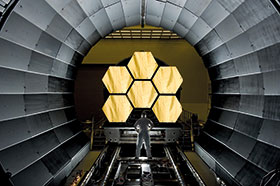

Following the 2008 financial crisis (and prior to the shale oil and gas boom in the US), we experienced a period of declining industry GDP. In response, the European Union started issuing manufacturing competitiveness reports to guide policymakers to stimulate the economy. The studies found that manufacturing contributes over-proportionally to exports, providing a way to bring liquidity to the region, speed recovery, and increase resilience to future crises. Benchmarking against countries such as Germany with a higher-than-average industry GDP demonstrated that the average level of industry GDP could be increased. Finally, the fact that innovation is a proven way to stimulate manufacturing growth made manufacturing the focus of the EU’s Horizon 2020 innovation programmes. Both the programmes for the discrete and the process industries are set up as private-public partnerships to increase ownership by industry and multiply the public investment. Europe’s strategy inspired the member countries to set up their own programmes in line with national needs.
Germany’s Industrie 4.0 programme is by far the best known of these, but the UK’s (High Value Manufacturing) Catapult programme and France’s Industrie du Futur are also likely to create economic impacts.
For the so-called innovation-driven economies as labelled by the World Economic Forum, initiatives that impact product value are most effective at boosting growth. However, cost-related improvements in process and productivity innovation are also useful.
Government initiatives such as Horizon 2020, Industrie 4.0, and to a lesser extent the US-based Smart Manufacturing Leadership Coalition (SMLC), are concerned with reducing manufacturing’s environmental footprint. The European initiatives also have social sustainability goals, such as well-being at work, job creation, quality of life, etc. In general, these initiatives all represent smart strategies for growth, environmental conservation and well-being.
Smart Manufacturing or Industrial IoT?
So what’s the difference between the terms “Smart Manufacturing,” and “Industrial IoT?” Smart Manufacturing is more encompassing and includes all methodologies, processes, and technologies needed to improve the outcome of manufacturing, be it in the form of product value, quantity or quality; productivity; or reduced environmental footprint. There are two main sources of improvement:
• Advanced manufacturing - this involves improvements in fundamental science or engineering, for example scientific advances such as photonics or chemical nanostructures or engineering improvements, such as modular production technology, additive manufacturing, or advanced forming.
• Smart manufacturing – this includes information, communication, or automation technologies applied to production processes and assembled into smart manufacturing systems.
Among these technologies we not only find the connected devices, systems, applications, and diagnostics that we refer to as Industrial IoT, but also established technologies that have potential in new domains and industrial sectors. For example, autonomous production optimisation applied in the process industries could make its way into discrete manufacturing, and lean or pull manufacturing could be introduced into the process industries.
Application examples
Current manufacturing processes and technologies can be augmented with smart manufacturing or Industrial IoT to create incremental value. In Europe, one of the integrated steel companies consistently implements Industrie 4.0 across domains and operations. The company was able to increase the throughput of a plant producing intermediate products (transforming steel slabs into rolled steel) by applying pull manufacturing and coordinating manufacturing and logistics with real-time information. While pull manufacturing is not new, there is great opportunity to apply it in new industry sectors. Industrie 4.0 creates momentum to do this.
In seven demonstration projects running for more than five years at several major chemical, polymer, and life sciences companies, the EU-sponsored F3 Factory project demonstrated its ability to reduce both capex and opex significantly, that is, in the 20 to 40% range; by simplifying and accelerating plant construction, skipping upscaling, and improving sustainability dramatically. The solution was to create smaller, modular units with proportionally high production capacity. These miniaturised, highly efficient chemical, pharmaceutical, or polymer plants in a container will make supply chains much more agile. But planning and optimising them is a complex procedure. With these modular production units, manufacturing capacity can be quickly scaled up or down to increase flexibility. Production units can also be shipped to sites close to raw material production or consumers. Early examples today are on-site production of liquefied air and dangerous gases as feedstock for downstream production. A very recent development in methane cracking that produces hydrogen and carbon without producing carbon dioxide is planned to be industrialised using modular production technologies. This would provide carbon dioxide-free energy from fossil fuel at industrial scale for a competitive price.
In one example, a large food and beverage company created highly standardised, modularised packaging lines. The company employed the ISA 88-based PackML standard to dramatically reduce engineering and integration effort when implementing new machines. Other companies are looking to this example to learn on how to set up modularised automation to realise modular, skid-mounted “plug-and-produce” production units.
In another example, the new Singapore plant of a large pharmaceutical company, decreased the time to produce the active ingredient from 12 months to just six hours, by transforming a batch process into a continuous process, thereby providing another excellent example of applying advanced manufacturing.
Engineering humans into the system
Humans, of course, are the key element in any manufacturing strategy. At their best, advanced manufacturing technologies, applications, and approaches can free plant personnel at all levels from repetitive tasks and provide appropriate tools; timely, in-context information; and easily-interpreted analytics to help solve problems and entirely avoid or minimise the impact of issues.
Valentijn de Leeuw is vice president of consulting at ARC Advisory Group’s European organisation. His experience includes knowledge of unit processes, simulation and modelling, and business practices utilising application software designed for manufacturing operations.
For more information contact Paul Miller, ARC Advisory Group, +1 781 471 1141, [email protected], www.arcweb.com

© Technews Publishing (Pty) Ltd | All Rights Reserved